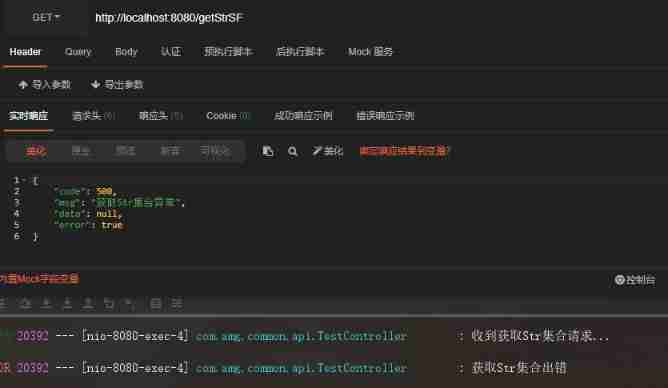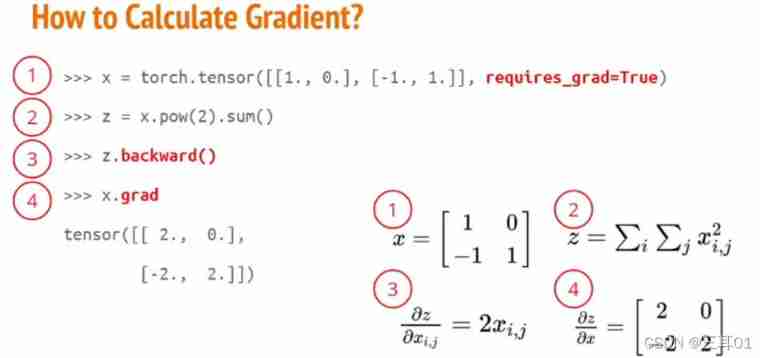Hope is being able to see there is light despite all of the darkness
At present, the mainstream development methods are front-end and back-end separation , Define a general and unified return format , It is very necessary to communicate at the front and back end , Everyone understands based on this agreement , Can quickly locate problems , Next, let's talk about how to define a unified response object gracefully
Design a unified response object
Define a unified response object , The things that this object needs to accomplish are
- There is a response status code
- There is a response message string
- There is a generic data carrier
- You can also define a method , It is used to identify whether there is an error in the transfer of the current object
The following is what I used to use , For reference only
// Omit getter and setter etc.
public class ApiResult<T> {
/**
* Status identification
*/
private Integer code;
/**
* The information carried
*/
private String msg;
/**
* Carry data body
*/
private T data;
/**
* Is it wrong
* @return true or false
*/
public boolean isError() {
return code != HttpStatus.OK.value();
}
}
Because every time new Object returns , Not very elegant , So I will also use an auxiliary generation class , It is specially used to generate response objects quickly and easily
public class ApiResultGenerator {
private static final Integer OK = 200;
private static final Integer SERVER_ERROR = 500;
private static final Integer NOT_FOUND = 404;
public static ApiResult success() {
ApiResult result = new ApiResult();
result.setCode(OK);
return result;
}
public static <T> ApiResult<T> success(T data) {
ApiResult<T> result = new ApiResult<>();
result.setCode(OK);
result.setData(data);
return result;
}
public static ApiResult failure() {
ApiResult result = new ApiResult();
result.setCode(SERVER_ERROR);
result.setMsg("server error...");
return result;
}
public static ApiResult failure(String msg) {
ApiResult result = new ApiResult();
result.setCode(SERVER_ERROR);
result.setMsg(msg);
return result;
}
public static <T> ApiResult<T> failure(String msg, T data) {
ApiResult<T> result = new ApiResult();
result.setCode(SERVER_ERROR);
result.setMsg(msg);
result.setData(data);
return result;
}
//... Free play
}
Now that the unified response object has been established , According to our habit, it's time to start testing
/**
* Return without data Of ( Success stories )
* @return
*/
public ApiResult getPaperInfoSuccess() {
if (log.isInfoEnabled()) {
log.info(" Receive get paper Information request ...");
}
//... Business logic
if (log.isInfoEnabled()) {
log.info(" Acquisition complete paper Information request , Ready to return object information ");
}
return ApiResultGenerator.success();
}
You can pay attention to , This json The object is the bridge between us and the front end , adopt isError This method can determine whether the interface has failed , This method can also be used in microservice invocation

Another example of failure
/**
* Return to carry data Of ( Failure example )
* @return
*/
@GetMapping("/getStrSF")
public ApiResult<List<String>> getTestStrFailure() {
if (log.isInfoEnabled()) {
log.info(" Receive get Str Collection request ...");
}
ApiResult<List<String>> response;
try {
response = getStrs();
// Manually simulate an exception
int i = 1/0;
} catch (Exception e) {
if (log.isErrorEnabled()) {
log.error(" obtain Str Collection error ");
}
return ApiResultGenerator.failure(" obtain Str Set exception ", null);
}
if (log.isInfoEnabled()) {
log.info(" Acquisition complete Str Collection request , Ready to return object information : {}", JSON.toJSONString(response));
}
return response;
}
It can be noted that , return data yes null, Because it is directly assigned as null 了 ,





![[105] Baidu brain map - Online mind mapping tool](/img/4f/64ee0bb15aec435294d4f5fde4493e.jpg)




![[groovy] groovy environment setup (download groovy | install groovy | configure groovy environment variables)](/img/99/bb05b6c48a9e70ca7ff77733d954b9.jpg)